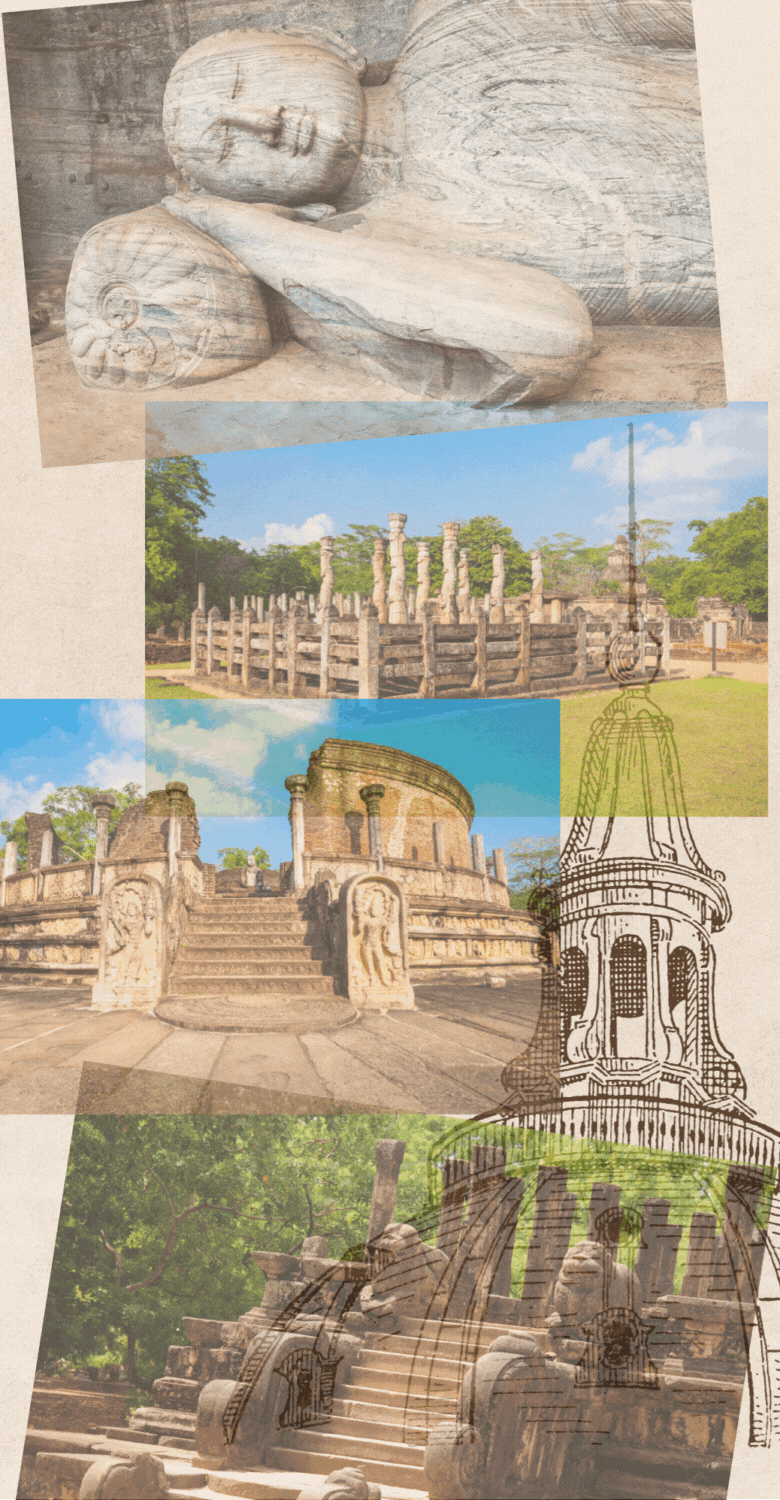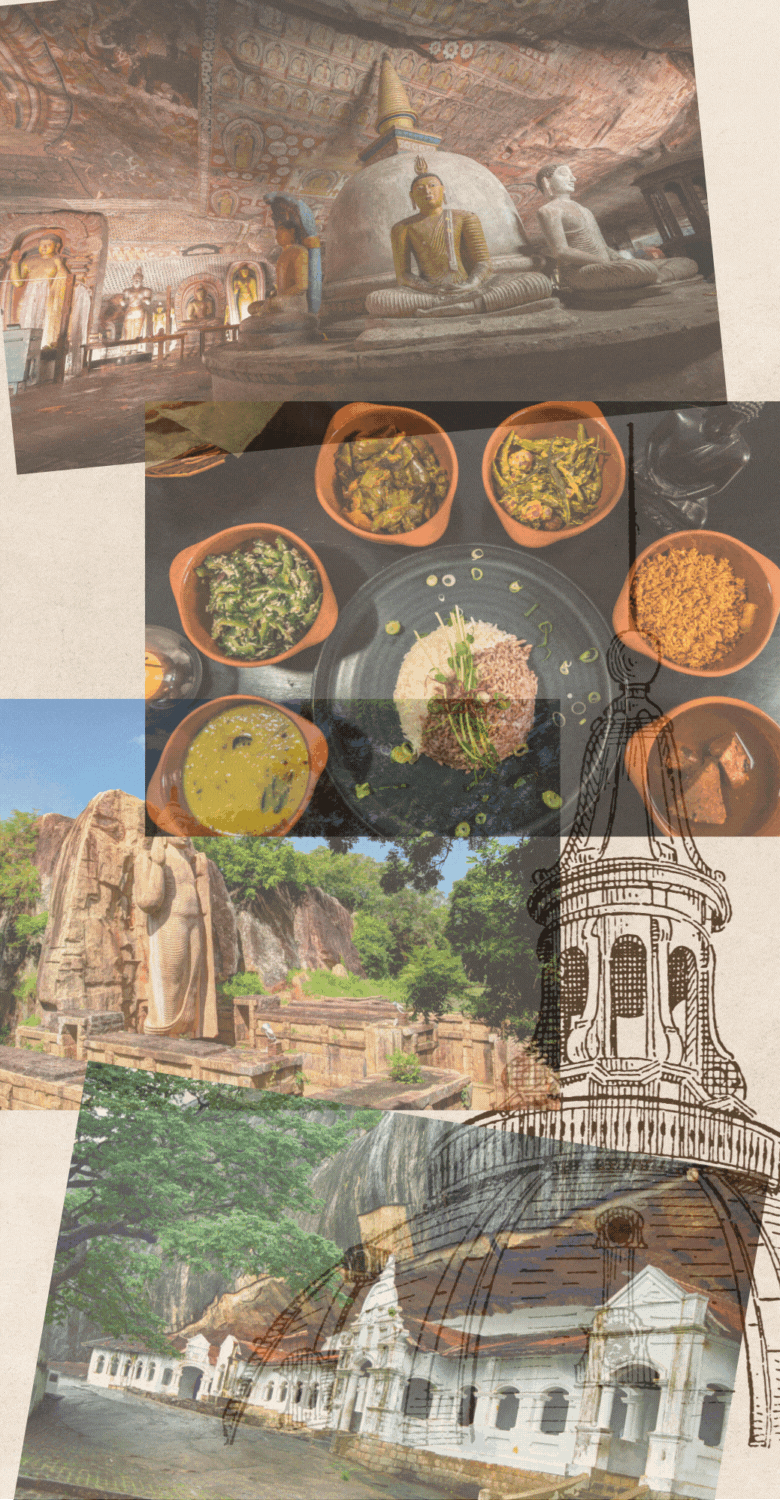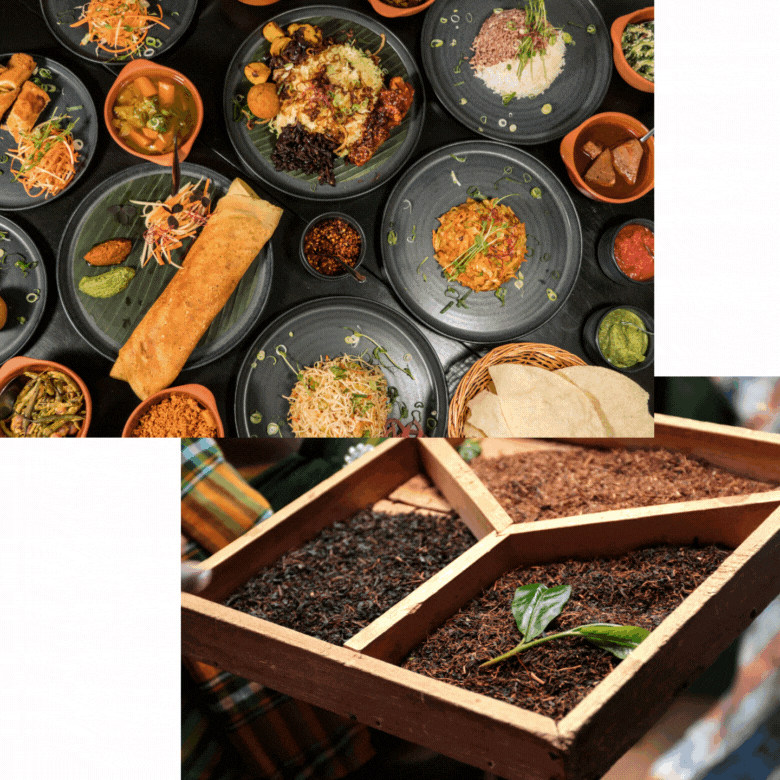Welcome to Sri Lanka, the Land of Serendipity.
- Welcome to Ceylonial, your online guide to the land of serendipity. This website is created to share with you the beauty, diversity, and charm of Sri Lanka, a small island country in the Indian Ocean. Sri Lanka is about the size of Ireland, with a population of about 22 million people. The official languages are Sinhala and Tamil, but English is widely spoken as well. Sri Lanka has many nicknames, such as the “Pearl of the Indian Ocean” for its shape and natural resources, or the “Tear-drop of India” for its location near the southern tip of India.

Discover the Rich Heritage of Sri Lanka.
- Sri Lanka is a country with a long and fascinating history, dating back to over 2500 years ago. The island has witnessed the rise and fall of ancient kingdoms, the arrival and influence of foreign invaders, the emergence and diversity of religions, and the struggle and achievement of independence. Sri Lanka is also a country with a vibrant and colorful culture, reflecting its ethnic, linguistic, and religious diversity. The island is home to various forms of art, music, dance, literature, and cuisine, as well as unique traditions and festivals. In this article, we will explore some of the interesting facts and features of the history and culture of Sri Lanka.
- Ancient Period (543 BC - 993 AD): This period marks the beginning of recorded history in Sri Lanka, with the establishment of the first Sinhalese kingdom of Anuradhapura by King Vijaya, who is said to be a descendant of a lion. The Anuradhapura kingdom lasted for over 1000 years, and was one of the most prosperous and influential civilizations in South Asia. The kingdom was also known for its adoption and promotion of Buddhism, which was brought to the island by Mahinda, the son of Emperor Ashoka of India. The Anuradhapura kingdom was followed by the Polonnaruwa kingdom, which was another center of culture and learning in Sri Lanka. The ancient period also saw the arrival of the Tamils, who established their own kingdoms in the north and east of the island, and the interaction with other foreign powers, such as the Greeks, Romans, Arabs, Chinese, and Malays.
- Medieval Period (993 - 1505 AD): This period marks the decline of the ancient kingdoms and the rise of new ones, such as the Jaffna kingdom in the north, the Kandy kingdom in the center, and the Kotte kingdom in the south. The medieval period also saw the invasion and occupation of Sri Lanka by the Cholas, a powerful dynasty from South India, who ruled the island for over a century. The medieval period also saw the development of new forms of art, architecture, and literature, such as the Sigiriya frescoes, the Gal Vihara statues, and the Mahavamsa chronicle.
- Colonial Period (1505 - 1948 AD): This period marks the arrival and domination of European powers in Sri Lanka, starting with the Portuguese, who were the first to establish a foothold in the island in 1505. The Portuguese were followed by the Dutch, who took over most of the coastal areas and trade in the 17th century. The Dutch were then replaced by the British, who conquered the entire island in 1815, after defeating the last native kingdom of Kandy. The colonial period also saw the introduction and spread of Christianity, the plantation of cash crops, such as tea, coffee, and rubber, the construction of railways and roads, the establishment of schools and hospitals, and the emergence of nationalism and resistance movements.
- Modern Period (1948 - present): This period marks the independence and development of Sri Lanka, after the end of British rule in 1948. The modern period also saw the formation and evolution of the Sri Lankan state, the adoption and amendment of the constitution, the establishment and growth of the economy, the participation and contribution of the international community, and the resolution and reconciliation of the ethnic conflict.


Culture of Sri Lanka
- The culture of Sri Lanka is a reflection of its history and diversity, as it incorporates elements from various sources, such as the Sinhalese, Tamils, Moors, Malays, Burghers, and Europeans. The culture of Sri Lanka is also influenced by its religions, such as Buddhism, Hinduism, Islam, and Christianity. The culture of Sri Lanka is expressed in various forms, such as the following:
- Art and Architecture: Sri Lanka has a rich and varied artistic heritage, ranging from ancient cave paintings, rock sculptures, and stupas, to medieval temples, palaces, and forts, to modern paintings, murals, and monuments. Some of the notable examples of Sri Lankan art and architecture are the Dambulla cave temple, the Ruwanwelisaya dagoba, the Sigiriya rock fortress, the Temple of the Tooth, the Galle Fort, and the Independence Memorial Hall.
- Music and Dance: Sri Lanka has a diverse and lively musical and dance scene, featuring traditional, classical, folk, and modern genres. Some of the traditional musical instruments of Sri Lanka are the rabana, the bera, the flute, the veena, and the sitar. Some of the traditional dance forms of Sri Lanka are the Kandyan dance, the low country dance, the Sabaragamuwa dance, and the Bharatanatyam dance. Some of the modern musical and dance styles of Sri Lanka are the baila, the calypso, the pop, and the hip hop.
- Literature and Language: Sri Lanka has a rich and diverse literary tradition, dating back to the ancient period, when the Pali and Sanskrit languages were used to write religious and historical texts, such as the Tripitaka, the Mahavamsa, and the Thupavamsa. The medieval period saw the development of the Sinhala and Tamil languages, which were used to write poetry, prose, and drama, such as the Kavsilumina, the Guttila Kavya, and the Kovil Arul. The colonial period saw the introduction and influence of the English language, which was used to write novels, short stories, and essays, such as the Village in the Jungle, the Reef, and the Face of the Buddha. The modern period saw the continuation and innovation of the literary genres and languages, as well as the recognition and award of the Sri Lankan writers, such as Martin Wickramasinghe, Ediriweera Sarachchandra, and Michael Ondaatje.
- Cuisine and Drink: Sri Lanka has a delicious and diverse cuisine, influenced by its geography, climate, and history. The staple food of Sri Lanka is rice, which is usually served with a variety of curries, made from vegetables, meat, fish, or eggs. Some of the common spices and ingredients used in Sri Lankan cuisine are coconut, chili, curry leaves, turmeric, and cinnamon. Some of the popular dishes of Sri Lanka are hoppers, kottu, string hoppers, pol sambol, and coconut roti. Sri Lanka is also famous for its beverages, such as tea, which is grown in the highlands and exported worldwide, arrack, which is a distilled liquor made from coconut sap, toddy, which is a fermented drink made from palm trees, and king coconut, which is a refreshing drink made from young coconuts.
- Traditions and Festivals: Sri Lanka has a rich and varied cultural heritage, which is celebrated and preserved through various traditions and festivals. Some of the common traditions of Sri Lanka are the respect for elders, the hospitality for guests, the wearing of sarongs and sarees, and the use of ayurveda and astrology. Some of the major festivals of Sri Lanka are the Sinhala and Tamil New Year, which is celebrated in April, the Vesak, which is celebrated in May, the Kandy Esala Perahera, which is celebrated in July or August, the Deepavali, which is celebrated in October or November, and the Christmas, which is celebrated in December.

